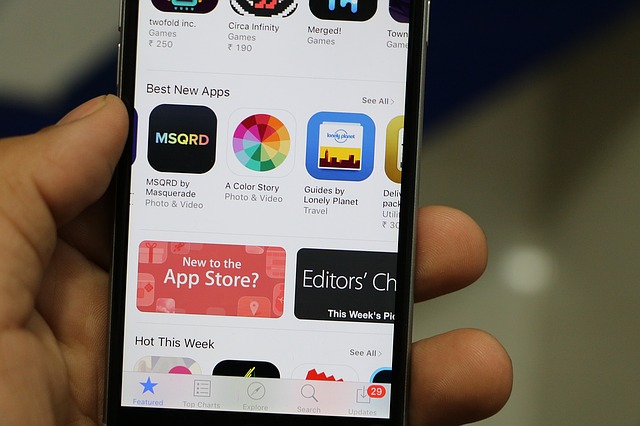We all make mistakes, both personally and professionally, and the mobile app marketing industry is no different.
However, a single minor mistake in marketing can often prove fatal for your business.
So, if you are aware of the common mobile app marketing mistakes made by others, you can prevent them yourself.
We have thus compiled a list of the five most common app marketing mistakes that you should avoid.
Mistake 1: Not Planning for Marketing during the Development
According to Statista, around 258.2 billion mobile apps will be downloaded by 2022.
That is an amazing number!
But, how can you ensure that your app is one of those that are downloaded a high number of times?
If you think that just publishing it on the app stores will do the job for you, then think again.
That is one of the biggest mistake you could make.
Although the app stores are the primary method for app discovery, you cannot ensure a huge amount of downloads by simply uploading your app to these stores.
You also need to create and leverage the power of your web presence.
That does not mean that your website landing page should be flooded with advertisements for your mobile app.
Rather, you need to ensure that, when the potential users visit your site, they will realize that you have an optimized mobile app available for them as well.
Mistake 2: Building a Web-Based Mobile App
Today, there are 2,8 million apps available on Google Play Store and and 2.2 million apps available in the Apple’s App Store. And these numbers are increasing every day.
So, it is evident that the bar for your app should be extremely high to stand out from the crowd.
But, if your app appears to be a launcher for your mobile website, then your potential users will think that you do not really understand mobile.
And, this will lead them to searching for alternative native apps and they could then download your competitor’s app.
The reason for this is simple.
Native apps are well-suited for all kinds of patchy internet connections. Your app should be accessible and easy to use in areas where high-speed internet connection is available and where it is unavailable or irregular, such as on airplanes and in the subway.
Remember, your users are not bothered about how complex your mobile app development process was; all that matters to them is the experience of using your app.
So, you can focus on only one platform at a time and learn what works best by analyzing the users’ behavior.
But, if you plan to make your app available on multiple platforms, then go for a cross-platform language that will help you build native apps for multiple environments. Such languages include Appcelerator, Xamarin, PhoneGap, CoronaLabs, and Icenium.

Users may be downloading your app, but that does not mean that they will use it forever. According to Apptentive, 90% of users who download an app are gone within just six months!
So, you need to work on encouraging your users to come back to your app frequently.
Remember, your users will only return if you can offer them ongoing value and not just because you want them to come back.
So, during the development phase itself, you need to ask yourself why a user would download the app multiple times.
Do deep research to figure out the users’ expectations from your app and why they would use it.
Also, devise an engagement strategy to re-connect with your users regularly. It could include letting them know about app improvements or offering them rewards and discounts that can only be availed through the app.
Mistake 4: Not Focusing on Data-Driven Strategies
Most mobile app developers choose a marketing channel that they deem fit. And, this is where they make a serious mistake.
Marketing should not be based on your gut feeling; it should rather be based on the data accumulated. You might choose a marketing channel based on your past experience, but, in today’s turbulent world, that may no longer be valid or work for you.
For example, the data might show that social media marketing is well-suited for marketing your app, but you plan to go for direct marketing.
Direct marketing does work. However, if your app is better suited for social media marketing, then going with direct marketing may not generate the results you are looking for.
You should also make sure that you understand the analytics data well to paint a picture of which marketing strategy will work for you.
As per a survey conducted by Tapdaq Community and AppLift, 88% of mobile app developers who install some form of analytics into their app do not really understand what actions they need to take based on the data generated.
So, make sure you do not fall under the same category.
Mistake 5: Not Including Benefits in the Sales Pitch
No one buys a product because of the features offered. Rather, they buy it based on how they can benefit from the features.
This holds true for your mobile app as well.
Your pitch should focus on alleviating the users’ pain and not simply talking about the features.
So, make your sales pitch rich with the many benefits the users will actually get if they use your app and do not simply state the many wonderful things your app can do.
For example, if your app is a project management tool, then, instead of talking about your app’s capability of improving planning, mention that users will never miss a deadline and will always stay up to date with their projects.